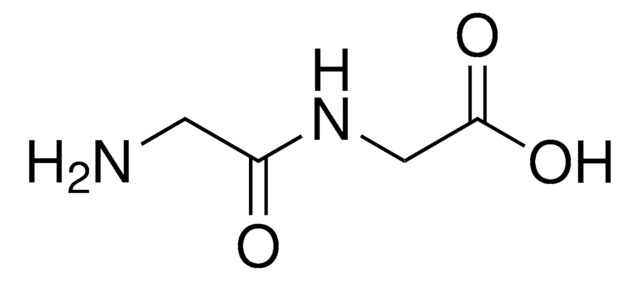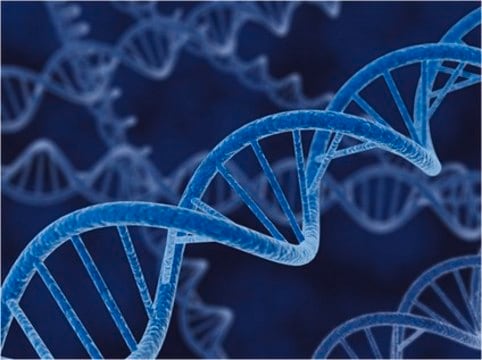G3915
Gly-Gly
BioPerformance Certified, suitable for cell culture, ≥99%
Synonym(s):
Diglycine, Glycyl-glycine
About This Item
Recommended Products
grade
BioPerformance Certified
Quality Level
Assay
≥99%
form
powder
technique(s)
cell culture | mammalian: suitable
impurities
endotoxin and total aerobic microbial count, tested
color
white
useful pH range
7.5-8.9
pKa (25 °C)
8.2
mp
255-260 °C
cation traces
heavy metals (as Pb): ≤5 ppm
application(s)
diagnostic assay manufacturing
foreign activity
DNase, RNase, NICKase and protease, none detected
SMILES string
NCC(=O)NCC(O)=O
InChI
1S/C4H8N2O3/c5-1-3(7)6-2-4(8)9/h1-2,5H2,(H,6,7)(H,8,9)
InChI key
YMAWOPBAYDPSLA-UHFFFAOYSA-N
Gene Information
human ... SLC15A1(6564)
Looking for similar products? Visit Product Comparison Guide
Application
- Flavor enhancement during the drying of scallop (Patinopecten yessoensis) as revealed by integrated metabolomic and lipidomic analysis.: This study examines the role of Gly-Gly in the flavor enhancement process during the drying of scallops. By using integrated metabolomic and lipidomic analysis, the research identifies key biochemical pathways involved in flavor formation, highlighting the significance of Gly-Gly in the food industry (Wang et al., 2024).
- A serum metabolomics-based profile in low bone mineral density postmenopausal women.: The research identifies metabolic markers, including Gly-Gly, that are associated with low bone mineral density in postmenopausal women, contributing to the understanding of osteoporosis and potential biomarkers for early diagnosis (Miyamoto et al., 2017).
Storage Class Code
11 - Combustible Solids
WGK
WGK 3
Flash Point(F)
Not applicable
Flash Point(C)
Not applicable
Personal Protective Equipment
Choose from one of the most recent versions:
Certificates of Analysis (COA)
Don't see the Right Version?
If you require a particular version, you can look up a specific certificate by the Lot or Batch number.
Already Own This Product?
Find documentation for the products that you have recently purchased in the Document Library.
Our team of scientists has experience in all areas of research including Life Science, Material Science, Chemical Synthesis, Chromatography, Analytical and many others.
Contact Technical Service





